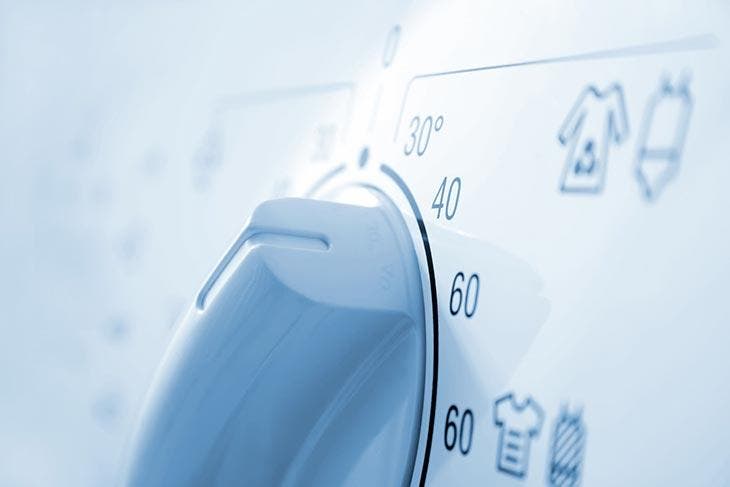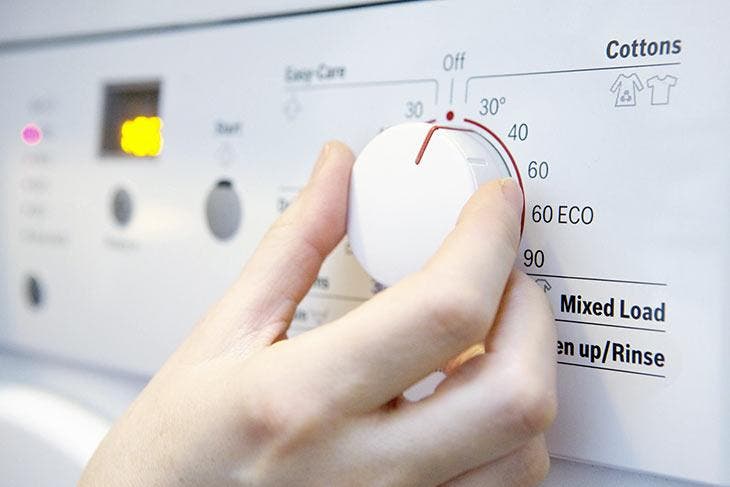The washing machine is an essential appliance in our households so that we can keep our laundry clean and fresh. While we use them regularly to wash our clothes, bed sheets, towels etc. to combine efficiency and economy. In fact, most people almost instinctively orient themselves towards the 40°C program, which is perceived as a kind of universal temperature, ideal for all types of laundry. In reality, it is a bad idea that can harm your wallet, but not only. We explain why.
The washing machine is certainly far behind in the ranking of the most energy-intensive appliances in the home, but with increasing energy costs it is necessary to pay close attention to the factors that influence energy consumption in the home. This includes washing laundry at 40 degrees Celsius. Why and how? Let’s look at this together.
Why should you no longer wash your laundry at 40°C?
Washing clothes at 40 degrees Celsius, as the average French person does, is often considered a good compromise between washing efficiency and appropriate electricity consumption. It’s a bad bill. In fact, the energy consumption of your washing machine can practically double if you choose this temperature, while with another program available on most models of washing machines you can achieve the same result with less consumption in kWh and therefore in euros.
Also Read: Use Your Washing Machine At This Time Of Day: You Save A Lot Of Energy

Why is washing at 40°C a bad idea?
Washing clothes at this temperature is not necessary to get clean and shiny clothes. It turns out that newer models of washing machines have energy efficient programs that allow them to be efficient at low temperatures. In addition, several manufacturers now offer active detergents from 20 degrees Celsius. But in addition, two other arguments should be able to convince you to avoid washing at 40°C: on the one hand, it is to save energy , and on the other hand, it is to protect the planet. You may not know it, but lowering the washing temperature by 10°C can make a significant difference.
Is it different to wash your clothes at 40°C instead of 30°C?
For your wallet, yes! Keep in mind that most of the energy used during a machine wash is used to heat the water. Reducing the temperature by 40 to 30°C therefore means a reduction in your energy consumption. But the most surprising thing is that the result for your clothes, especially everyday clothes, remains the same. Apart from certain types of laundry, the 30°C program is suitable for almost everything and will satisfy you. To better see the difference in energy consumption depending on the program you choose, you should know that when you wash your laundry at 60°C you will consume approximately 1.3 kWh. At a washing temperature of 40°C, however, your energy consumption is reduced to approx. 0.7 kWh. And if you wash your laundry at 30°C, your energy consumption is even lower, just 0.4 kWh. enough to reduce your electricity bill. And that’s not the only advantage. Lowering the temperature is also an ecological gesture.

Why is washing clothes at 30° green?
According to an awareness campaign carried out in March 2021 by the detergent brand Ariel entitled “Every degree counts” and whose aim was to promote the effectiveness of cold washing, this would be the case if every French household systematically opted for the program at 30 ° decides to save as much energy as the consumption of the city of Nantes or even the equivalent of the carbon footprint of two million cars if the operation were carried out at European level. What this means is that producing a machine at a low temperature benefits the environment by reducing CO2 emissions, which helps protect our planet by reducing the negative effects of global warming on our ecosystem.
Bed linen, paints, detergents… 3 answers to 3 frequently asked questions about the optimal washing temperature for laundry
Making a machine may seem like a trivial activity that could be summed up in a few quick gestures, such as: For example, open the washing machine door, stack everything you want to wash in the drum, add detergent, close it and start the program. But as we all know, it’s not that simple. This task raises many questions for many people. Let’s take a look at the most common ones.
Can colors be mixed at 30 degrees Celsius?
Yes, you can, but under certain conditions. If you choose the 30°C program, you can save yourself the hassle of sorting laundry. Of course, by taking care to separate your clothes from tea towels, towels and other laundry made from robust fabrics, which are generally more soiled and stained and therefore need to be washed at high temperatures, especially to eliminate bacteria. In addition, when washing at a low temperature, the fibers of the clothing are less damaged and the colors do not bleed or become dull. They are therefore better preserved. However, you can never be too careful. For example, washing a white garment between colored garments, especially if they are new and you are washing them for the first time , is clearly not a very good idea.

Which laundry should be washed at 40 degrees Celsius?
As mentioned above, you can wash your everyday clothes in cotton, wool, linen, etc. at 30°C instead of 40°C and achieve the same result in terms of cleanliness. However, the 40°C program is sometimes recommended for textiles that come into direct contact with the body, such as underwear and bath towels.
At what temperature should the sheets be washed?
When washing sheets, the right temperature depends on a few important factors, namely:
Sheet material: Cotton sheets can be washed at higher temperatures, up to 60°C, while more delicate materials such as silk should be washed at lower temperatures.
Washing frequency: A washing temperature of 40°C is recommended for weekly washing frequency. This helps maintain the quality of the sheets across washes. However, if you choose to machine wash every two weeks, the level of soiling of the sheets and the presence of microbes may require a temperature between 60°C and 90°C, especially for white sheets.
Also read: Remove all limescale from the washing machine by adding a common ingredient

At what temperature does a garment shrink?
In most cases, clothing will shrink at temperatures above 60°C, but this can vary depending on the fabric and type of fibers used. To ensure that your garments last , follow the washing and care instructions on the garment label. They may recommend specific washing temperatures and drying methods to prevent shrinkage.
The benefits of lowering the temperature of your washing machine may seem minimal, but compared to the number of machines you use per year, the savings in energy and money are immediately noticeable, in addition to the satisfaction you get from using something good do deeds for the planet.
Also read: Put a plastic bag in the washing machine and the result will surprise you. You will do it again and again
